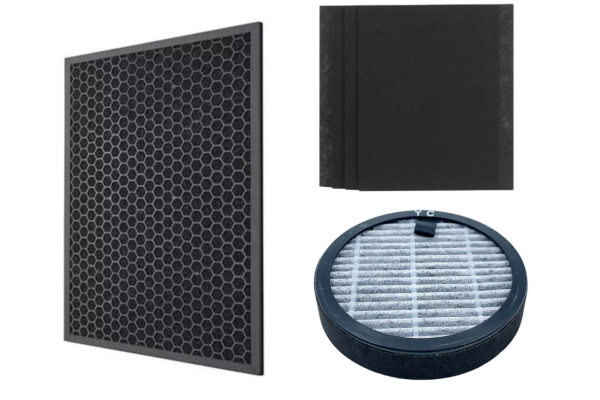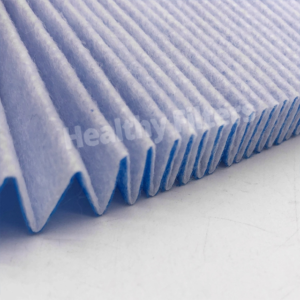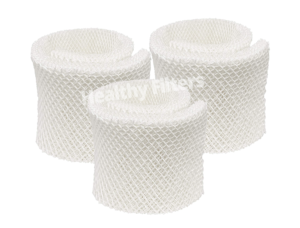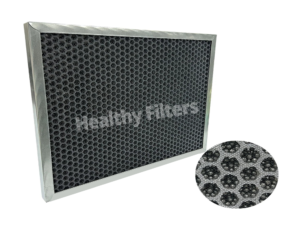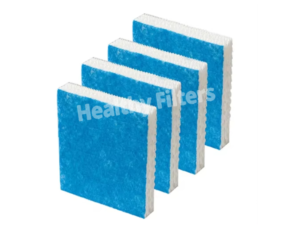Activated carbon filter is a core component designed for removing gaseous pollutants (such as formaldehyde, benzene series, odor, VOCs, etc.) in air purification system. It purifies air and improves the health of indoor environment through the porous adsorption characteristics and chemical bonding mechanism of activated carbon. With its core advantages of broad-spectrum adsorption, long-term stability, safety and environmental protection, it has become an essential solution for families, offices and industrial sites to fight chemical pollution and odor.
Core structure and working principle
Material and process
Activated carbon type:
Coconut shell activated carbon: high iodine value (≥1000mg/g), well-developed micropores, good at adsorbing small molecular gases (formaldehyde, benzene);
Coal-based activated carbon: rich in mesopores, suitable for adsorbing medium and large molecular pollutants (toluene, TVOC);
Impregnated activated carbon: adding chemical catalysts (such as KMnO₄, potassium iodide) to enhance the decomposition ability of harmful gases such as hydrogen sulfide and ammonia.
Filter structure:
Honeycomb: Increase the gas-carbon contact area, and reduce the pressure drop to 30-80Pa;
Particle filling: Activated carbon particles are compounded with fiber layers, taking into account both adsorption and physical interception (can capture some PM2.5).
Adsorption mechanism
Physical adsorption: Activated carbon micropores (<2nm) capture gas molecules through van der Waals forces;
Chemical adsorption: Surface functional groups react chemically with pollutants (such as oxidation, catalytic decomposition).
Core performance parameters
Parameters Performance indicators
Formaldehyde adsorption ≥200mg/g (72-hour test, GB/T 18883 standard)
TVOC removal rate ≥85% (toluene test, ISO 16000-6 standard)
Applicable area 20-100㎡ (depending on the filter volume and CADR value)
Initial pressure difference ≤50Pa (@ rated air volume), energy-saving and silent
Service life 6-12 months (average daily use of 8 hours, medium and low pollution load)
Five core advantages
Broad-spectrum purification:
Simultaneous adsorption of formaldehyde, benzene, ammonia, smoke, pet odor, etc., covering common gaseous pollutants in home and industry.
Safety and environmental protection:
Food-grade activated carbon has no ozone release, and some models support high-temperature regeneration (200-300℃) to reduce waste.
Compound function:
Optional antibacterial coating (silver ion) or HEPA composite layer to achieve “gaseous + particle” dual-effect purification.
Silent and energy-saving:
The honeycomb structure reduces wind resistance and is suitable for low-power fans, with a noise level of ≤35dB (A).
Flexible adaptation:
Thickness 20-100mm, supports round and square customization, and is compatible with mainstream household and commercial purification models.
Typical application scenarios
Home environment:
New house decoration: Continuously decompose formaldehyde and benzene series, accelerate the volatilization of harmful gases;
Kitchen and pet residence: absorb oil smoke and pet odor to improve air freshness.
Commercial places:
Offices and conference rooms: remove printer ink odor and decoration residual VOCs;
Hotels and gyms: purify sweat and perfume odors to improve customer experience.
Industry and medical:
Laboratory ventilation: capture chemical volatile gases (such as acetone and chloroform);
Hospital wards: control the odor of disinfectant water and assist in infection prevention and control.
Selection and maintenance guide
Selection recommendations
Material selection by pollution type:
Formaldehyde/benzene: high iodine coconut shell activated carbon;
Odor/VOCs: impregnated activated carbon (such as KMnO₄ modification);
Combined pollution: HEPA+activated carbon composite filter (PM2.5 and gas dual effect).
Adaptation by area:
Below 30㎡: 1-2kg activated carbon capacity;
50-100㎡: 3-5kg activated carbon capacity + honeycomb structure.
Smart maintenance
Life monitoring:
Some models have built-in gas sensors, and the APP reminds you to replace (efficiency drops to 50% of the initial value);
Sensorless models are recommended to be replaced every 6-12 months (depending on the frequency of use).
Regeneration treatment:
Household filter element: Expose to the sun for 2-3 hours to restore some adsorption capacity (limited to unsaturated state);
Industrial filter element: Regeneration with professional high-temperature desorption equipment, and recycling for 3-5 times.
Industry innovation and trends
Intelligent adsorption: Nano activated carbon integrates humidity/temperature sensors to dynamically adjust adsorption efficiency;
Photocatalytic upgrade: TiO₂ coating + UV lamp combination to achieve adsorption-decomposition-regeneration closed loop;
Biochar application: Bamboo charcoal and fruit shell charcoal account for an increase in carbon footprint, reducing carbon footprint by 40%.
Activated carbon filters have become invisible guards against indoor air pollution with “precise adsorption, long-term protection, and green circulation”. From new home formaldehyde removal to industrial waste gas treatment, it combines science and nature to provide reliable protection for healthy breathing.

